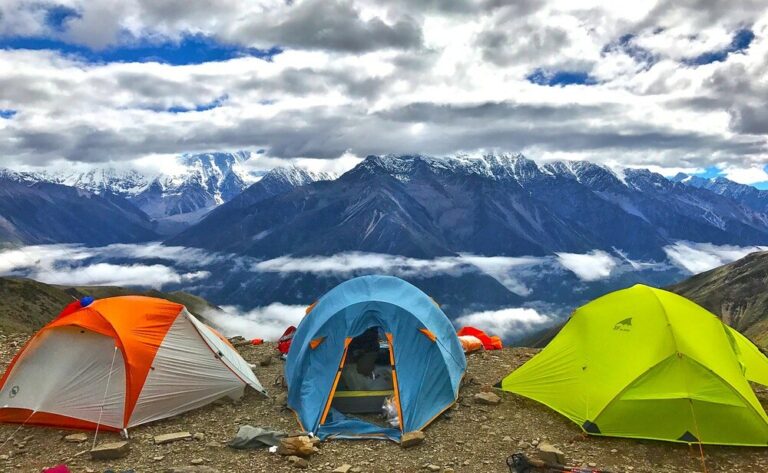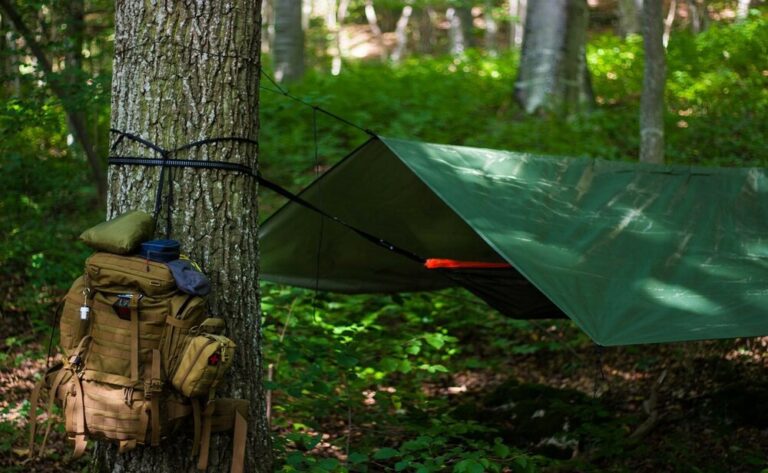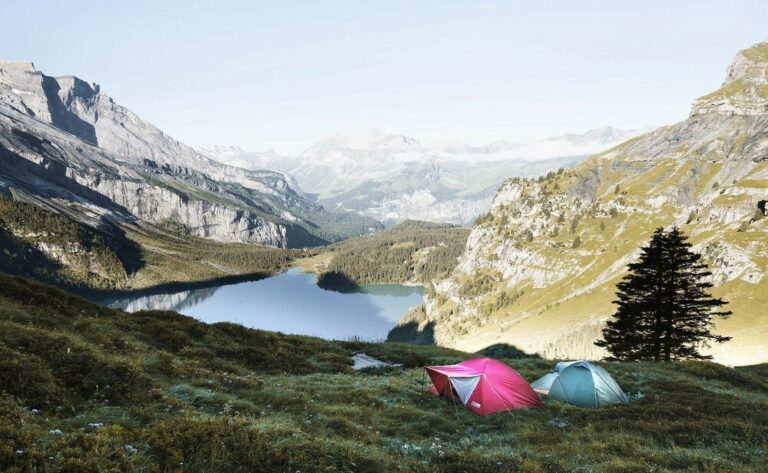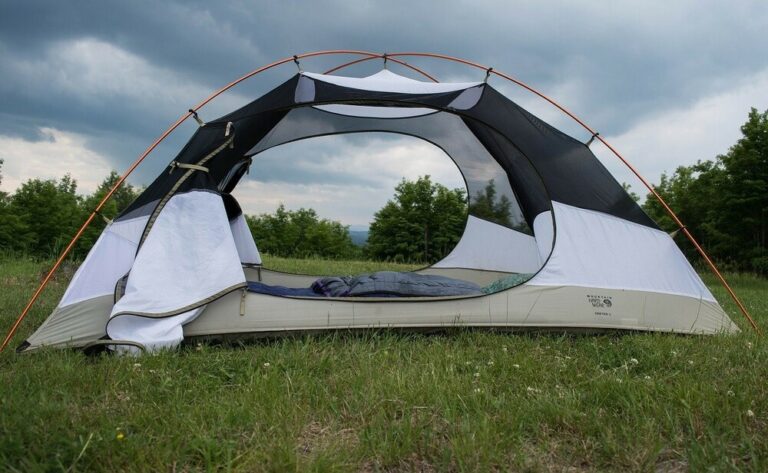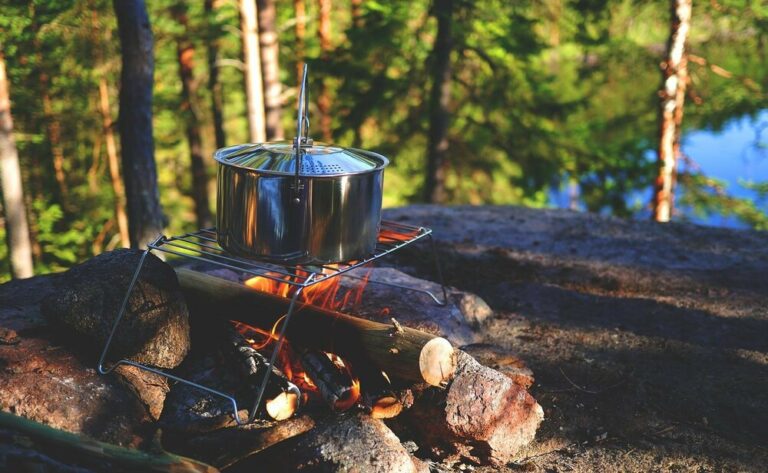10 Most Common Camping and Hiking Injuries
Many people consider hiking a great way to get into shape and do a little “me time.” Most people’s idea of camping or hiking is sitting around a campfire, roasting marshmallows, and sipping a frosty adult beverage as the sunset approaches. In reality, hiking and camping are very physical activities, which have many serious risks associated with them. Although hiking and camping can be healthy activities, they can also be dangerous. Most of the time, it’s the preparation and the type of activities that make a trip dangerous. Therefore, you must prepare yourself for a hiking or camping trip, or you may find yourself one painful injury away from a visit to the ER.

1. Avalanche Injury
In case you haven’t heard, there has been an increase in snow avalanche deaths. The main problem with these avalanches is that they’re generally caused by snowmobiles and people on skis, which don’t have the muscle strength to stop these kinds of avalanches. There have been many fatal accidents where a snowmobiler, or someone on skis, has been caught in an avalanche, and either die from the impact of the avalanche or by suffocation from being trapped under the snow.
2. Falling Tree
A tree is a great place to hide, eat, sleep, and escape the elements. Most of the time, you can get away with hanging out near the tree for a few hours or a couple of days, even though it’s not actually “hiding.” However, some tree types can be dangerous and cause injuries, specifically falling tree trees. Falling tree trees are usually unstable because the branches are hanging too low to be stable. When you’re sitting near the tree, it makes the branch deform and the trunk wobble. If you don’t have your balance right, you’re liable to fall. Falling tree trees are common in many parks, so you might want to avoid hiking near fallen tree trees, if possible.
3. Injured/Crippled Hiker
I’m sure you’ve heard the saying “if you can’t say something nice, don’t say anything at all.” Unfortunately, that doesn’t apply when talking about injuries and hiking. When you have injuries, you tend to talk about them more. For instance, if you have a sprained ankle, you might say, “I don’t feel good,” or “my ankle is hurting me.” You’ll talk about the injury to others and possibly go into great detail. It’s also not uncommon for injured hikers to start with a limp and end up with a disability. This may be caused by a heart attack, a compression fracture of the spine, or other dangerous medical conditions.
4. Loss of Balance
Skiing can be very dangerous if you don’t have control of your skis. For example, if you’re going down a mountain and start to lose control, you can easily wipe out and die. If you do fall, you’ll fall on your head and neck, which will cause the spinal cord to stretch. If you have a concussion, you could be paralyzed. Even though you might not have full control of your skis, it’s important to stay on your feet, at all times, and avoid falling.
5. Hypothermia
While some people think that hypothermia only affects people with low body temperature, it occurs when you get too cold, which means it can occur at any body temperature. Hypothermia can be very dangerous, and you’ll likely know you have it because you’ll start shivering and become confused. You’ll probably get confused, and start to think that you need to go to the hospital or you’ll wake up thinking that you’re awake. Getting hypothermia is extremely painful and will cause you to lose control of your body.
6. Strain Trauma
If you can’t stretch your arms or legs, you’ll probably feel pain in your muscles. People with bone fractures can be more likely to suffer from strained/painful tissues. There are many other types of pain, but this is the most common. If you have any kind of injury, your body might try to repair itself, but it will do more harm than good. It will cause you to feel more pain and restrict blood flow to those areas, which will further increase your chances of getting more injuries.
7. Injury or Illness
Most of the time, injuries are minor and only need a few days of recovery time. However, when you have an injury or illness, it could take up to 2 weeks to fully recover. It’s common for people to be in pain, especially when they have a broken bone. There is a lot of swelling and bruising around your injury, so you may also feel pain if you move your leg. You may also develop a fever and feel weakness, as your body tries to fight off an infection. Your immune system might also be weakened. If you have a fever, get plenty of rest and drink a lot of water. Seek medical attention if your symptoms get worse or you have trouble sleeping.
8. Unusual Weather
Since summer is coming up, you may notice lots of clouds in the sky. This is normal, and you shouldn’t freak out if you see a light or gray mist hanging over your hiking trail. Clouds can be very friendly because they reflect the light that the sun gives off, which will provide some protection against the sun’s rays. Injuries occur more often during the summer because the temperatures are higher, so you could be in more danger. On the other hand, the cold weather also can lead to injury or illness.
9. Dehydration
Dehydration can happen in summer because the heat can dehydrate you and your body needs more water to keep cool. It’s always best to drink plenty of water. Dehydration could cause fatigue, headaches, and dizziness, so you may feel tired and out of it. It may be harder to stay cool, and you may experience muscle cramps. Be sure to drink water and get enough rest. Dehydration can become fatal, so if you are feeling a little bit off, you should talk to a doctor.
10. Sudden Heat Stroke
While the sun isn’t as intense in the winter as it is during the summer, it’s still extremely warm and a little bit humid. This could lead to an increased risk of heat stroke. The heat can make you feel hotter than you are, and if you’re not used to the heat, you could get dehydrated. Symptoms include excessive sweating, nausea, dizziness, confusion, confusion, hallucinations, muscle weakness, muscle cramps, unconsciousness, and death. However, the symptoms of heat stroke can occur without the heat. The heat can cause your heart to work harder, and can eventually lead to death if you don’t treat it right away.
Hiking in winter can be a lot safer and easier, especially if you take these precautions. When you stay hydrated and rest during your hike, you’ll be more likely to have fun and stay safe.
Tips for Getting Rid of Injuries
If you do get an injury, you may need to take the following steps to get better. These include resting, applying ice packs, taking ibuprofen, drinking plenty of water, and applying heat.
1. Rest
It’s best to give your body as much rest as possible, especially when you have an injury. You will feel better overall if you take a couple of days to recover. Once you feel better, you can continue with your hiking. It is important to get as much sleep as possible. As the body works to recover, it can sleep for hours and hours. You may also feel a lot weaker than usual, so try to make sure you get plenty of rest, even if you don’t feel very tired.
2. Ice Packs
Once your injury is at a minimum level of swelling, put an ice pack on it. Place the ice pack on the injured area, and leave it on for a couple of hours. Take your heat pack off before bedtime, as the cold should help you sleep. It is also a good idea to take ibuprofen if you’re not feeling well. Ibuprofen will help reduce inflammation, so you’ll feel better in the morning. Your body should return to normal in a couple of days, so don’t be too worried if you have a little bit of pain for a few days.
3. Ibuprofen
You may be more likely to get an infection from an open wound if you keep it exposed to the cold, so you may want to put some ibuprofen on the area. Apply the heat pack a couple of times a day, while you’re resting, and when you start to feel better. It is important to stay away from any chemicals, so be sure to stick to an over-the-counter heating pad. These types of pads are made without any harmful chemicals and are safe for your skin.
4. Heat Pack
If your heat is getting too high, put a heating pad on it. This may help the swelling go down. Try to use your heat for 10 to 15 minutes at a time. You’ll be able to notice the pain going away and your heat will be back at normal levels. It is also a good idea to get out of the cold for a little bit. If you can go to a warm environment, this can help your body get back to normal. You should keep your heat on for 10 to 15 minutes at a time.
5. Take It Slow
You may not feel as good when you start hiking again, so be sure to take it slow and enjoy the rest of your trip. Just because you were hiking on the trail doesn’t mean you should do that all the time. If you’re not sure, go out for a hike a few times to see how you feel. If you still feel as good, try going for longer and more difficult hikes, as this will help your body get stronger.
6. Go Easy
If you start with an injury and it gets worse, tries to ease back into hiking. You may be able to start small by only going for shorter and easier hikes. This will help your body heal faster. If you feel you need to do the tough hikes, make sure you keep in mind that this could cause more injuries in the future.
7. Consider Taking a Class
This may be the perfect time to sign up for a more advanced outdoor class. This will give you the training to do more difficult hikes. If you have family that can take you for these hikes, this is a great option. It is also a good way to meet new people, and see new places. It is also a good idea to get out of the cold if you can, as it may help your healing process. This is a good option if you can’t get a lot of exercises outdoors in the cold, as this will help you keep your heart healthy.
8. Use Grips and Hiking Boots
When you start hiking again, make sure to use strong, lightweight grips and boots. These types of tools can help you protect your feet and ankles, and reduce the chances of any more injuries. These types of hiking boots usually don’t weigh much, so they’ll be easier on your body. These types of tools are also a good option if you have injuries on your feet, as these will help support your feet and ankles and make your walking much easier.
9. Lower Your Exertion
As you start hiking again, you may be tempted to do your normal walks. These will be fine, but take it down a notch. If you do your normal hikes, you’ll likely get tired pretty easily, and this will make your injuries worse. It is also important to take a little more time with hikes that you have already done.
10. Walk Slow
It is also important to walk slowly while taking small steps. This will help prevent any potential injuries, as your legs will be in less shock. It will also help with the healing process, as it will be easier on your body. It is a good idea to do this when you start to walk again, as your body will be stronger and able to take the movements of walking.
Conclusion
If you do injure your leg, it is important to take it easy and give your body time to heal. There are ways to make this easier and avoid further injuries. If you do need to hike, make sure you use only the proper tools, try to keep your exertion low and walk slowly.
